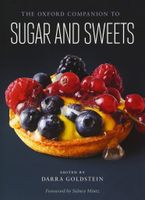Label
All
0
Clear all filters
🔥 Try our grilling cookbooks and save 25% on ckbk membership with code BBQ25 🔥
The Science of Custards
Appears in
Published 2015
Custard sauces that use egg as a thickener are notoriously tricky. Their texture relies on the coagulation of egg proteins as the mixture is heated. These proteins unfold to form a network that traps liquid, thereby yielding the velvety smoothness characteristic of custards. Beaten egg coagulates at about 156°F (69°C), although the presence of milk and sugar raises the coagulation temperature, so the mixture thickens at a temperature approaching 176°F (80°C). If heated beyond this point, the mixture will curdle and become spoiled. Heating the mixture in the top of a double boiler removes much of the risk from the process, and scalding the milk before adding it to the whisked mixture of sugar and eggs speeds up the process somewhat. Flour is sometimes added to stabilize the proteins, which allows the mixture to be heated to the boiling point (essential for cooking the flour).
Part of
Advertisement
Related Recipes
-
-
-
-
Related Reference
-
-
-
-
Advertisement
The licensor does not allow printing of this title



